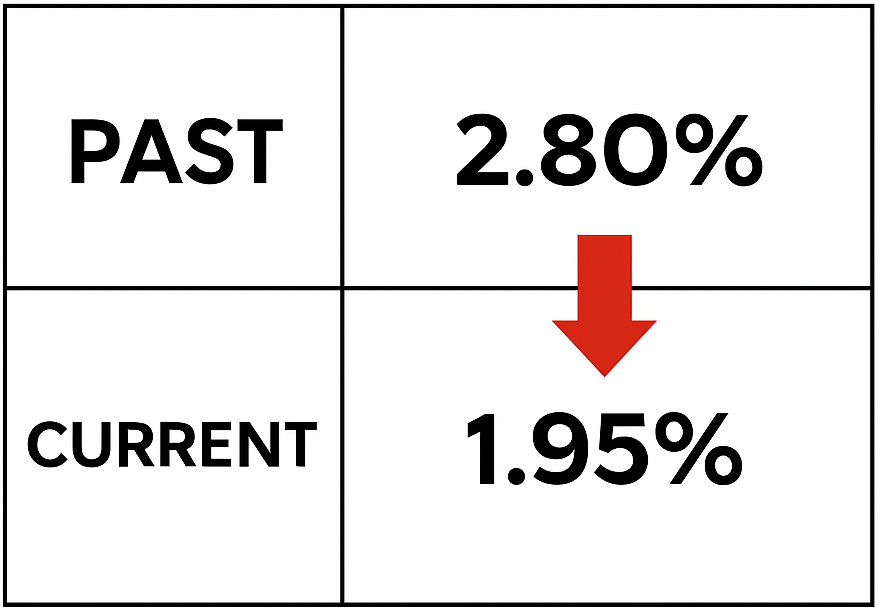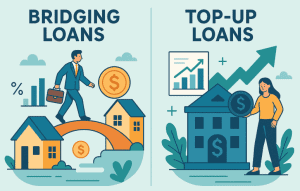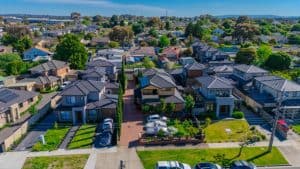Heard of “decoupling” but not quite sure what it means? In Singapore’s property market, decoupling is a popular strategy for private homeowners—especially couples—who want to avoid ABSD when buying a second property.
Simply put, it means one co-owner transfers their share of the property to the other, so the outgoing party can purchase another home as a first-time buyer. No, it’s not about divorce—just smart property planning.
In this step-by-step guide, we’ll break down how decoupling works in Singapore, what it costs, how it affects your mortgage and CPF, and whether it’s the right move for you.
What Does It Mean to Decouple a Property in Singapore?
Property decoupling in Singapore is a legal strategy used by private homeowners to restructure property ownership. It allows one co-owner—typically a spouse—to transfer their share of a property to the other.
The benefit? The outgoing party becomes a first-time buyer again and can purchase another property without paying Additional Buyer’s Stamp Duty (ABSD).
This method is commonly used to save on ABSD, optimize mortgage loan rates in Singapore, and expand one’s property portfolio more affordably.
What is property decoupling and how does it work in Singapore?
Decoupling involves a transfer of ownership between co-owners of a private property.
Here’s how it typically works:
- Property is held under tenancy-in-common (e.g. 99–1 split)
- One owner sells or transfers their share to the other
- The outgoing party is now “free” to buy another property as a first-time buyer
Expert tip: You must be holding the property under tenancy-in-common. Joint tenancy must be converted before decoupling is possible.
Why do co-owners decouple to avoid ABSD and own multiple properties?
ABSD on second properties for Singapore citizens is currently 20%. That’s $200,000 on a $1 million property.
Reasons couples choose to decouple include:
- To avoid ABSD when buying a second private property
- To qualify for first-time buyer benefits again
- To plan for future rental income or legacy planning
- To optimise mortgage interest rates in Singapore
What are common scenarios where property decoupling is used?
Decoupling isn’t just for the ultra-wealthy—it’s surprisingly common among regular homeowners.
Common use cases:
- Married couples buying a second property under one name
- Owners upgrading while keeping their first home for rental
- Parents buying a second home for children, but want to avoid ABSD
- Investors planning long-term rental or retirement strategies
What Types of Property Ownership Allow Decoupling?
If you’re planning to decouple your property in Singapore, your ownership structure matters. Not all ownership types allow decoupling, and misunderstanding this could delay or derail your plans. Let’s break it down so you know exactly where you stand.
What is the difference between joint tenancy and tenancy-in-common?
The way you legally own your property—either through joint tenancy or tenancy-in-common—determines whether you can decouple.
Comparison of Property Ownership Types in Singapore for Decoupling
| Ownership Type | Key Features |
|---|---|
| Joint Tenancy | - Both co-owners share equal interest in the entire property - Right of survivorship applies - Shares are not clearly defined — decoupling not allowed |
| Tenancy-in-Common | - Each party owns a specific share (e.g. 99:1 split) - No automatic survivorship - Individual shares can be transferred — decoupling allowed |
Many couples choose a 99:1 share under tenancy-in-common to reduce buyer stamp duty costs. Use our BSD calculator to estimate how much you might need to pay.
Can you decouple under joint tenancy, or must you convert to tenancy-in-common?
You must convert to tenancy-in-common before decoupling. Joint tenancy doesn’t allow partial transfers, which makes decoupling impossible unless you first change the ownership structure.
Steps to convert joint tenancy to tenancy-in-common:
- Engage a conveyancing lawyer
- Apply to the Singapore Land Authority (SLA)
- Decide on the shareholding structure (e.g. 99:1, 80:20)
Expert tip: Once converted, make sure the remaining owner’s mortgage loan in Singapore can be supported by their income.
Why is property decoupling not allowed for HDB flats?
Unfortunately, HDB flats cannot be decoupled. HDB enforces strict ownership and eligibility rules that don’t permit share transfers for financial planning purposes.
Here’s why HDB decoupling is not allowed:
- Transfers are only approved in specific cases (e.g. divorce, death)
- You cannot buy or sell shares of your HDB to a co-owner
- ABSD avoidance is not considered a valid reason
Looking for flexibility? Consider switching from an HDB loan to a bank loan via refinancing. Here’s our full HDB home loan guide for options and next steps.
How to Decouple Property in Singapore: Step-by-Step Guide
Decoupling might sound complex, but the process is fairly straightforward when broken down into clear steps.
Whether you’re preparing to transfer shares through a sale or gift, this section will guide you through the legal requirements, timeline, and document checklist—so you know exactly what to expect.
What documents and legal requirements are needed for decoupling?
Before you start, make sure you’ve gathered the right documents. These are essential for your lawyer to execute the ownership transfer and to comply with CPF and IRAS regulations.
Documents required for property decoupling in Singapore:
- Property Title Deed
- Latest mortgage statement from your bank
- NRIC copies of both parties
- Marriage certificate (if applicable)
- CPF withdrawal history and usage breakdown
- Option to Purchase (if applicable for transfer by sale)
- Tenancy-in-common agreement or SLA conversion documents
Need help with planning loan obligations? Use our mortgage loan repayment calculator to estimate new monthly installments under a sole borrower.
What is the exact process and timeline for a successful decoupling?
The decoupling process usually takes 8 to 12 weeks from start to finish. Here’s how it flows:
Step-by-Step Timeline for Property Decoupling:
| Stage | Estimated Timeframe | Key Actions |
|---|---|---|
| Engage a conveyancing lawyer | Week 1 | Review title deed, check ownership structure |
| Convert to tenancy-in-common (if needed) | Week 1–2 | File with SLA and receive updated ownership record |
| Draft sale & purchase agreement | Week 2–3 | Lawyer prepares documents, CPF and mortgage bank are notified |
| Execute transfer and lodge with SLA | Week 4–6 | Pay stamp duties, transfer ownership, CPF refunds initiated |
| Legal completion | Week 8–12 | All funds cleared, IRAS updated, new title issued to remaining owner |
If you’re using CPF for your home, remember that accrued interest must be refunded during the transfer. Plan ahead using our buyer stamp duty calculator to avoid surprises.
What are the options: sale of share vs gift transfer?
There are two ways to execute a decoupling: selling your share to your co-owner or gifting it.
Comparison of Sale vs Gift Transfer in Property Decoupling:
| Method | Pros | Cons |
|---|---|---|
| Sale of Share | - Legally robust - Commonly used for mortgage-supported properties | - Buyer’s Stamp Duty (BSD) applies - May require refinancing |
| Gift Transfer | - No money needs to change hands - Simpler for fully paid properties | - Still subject to BSD based on market value - Not accepted by all banks |
Not sure which works for your case? Speak to a mortgage broker in Singapore to assess financing implications for either approach.
How Much Does It Cost to Decouple a Property?
While property decoupling in Singapore can help save on ABSD in the long run, it’s not without upfront costs. Legal fees, stamp duties, and CPF refunds can add up—so it’s important to budget accurately before making a move.
Let’s break down the actual costs involved so you can assess if decoupling makes financial sense for your situation.
What are the legal, conveyancing, and administrative fees involved?
Here’s a quick look at the typical fees you’ll incur when decoupling your private property:
Estimated Decoupling Costs in Singapore (Private Property):
| Cost Component | Estimated Range |
|---|---|
| Legal and conveyancing fees | $2,500 – $4,000 |
| Valuation report (if required) | $300 – $500 |
| SLA registration fee | ~$80 |
| CPF lawyer panel admin charges | ~$150 – $300 |
| Bank processing fees (refinancing) | $500 – $1,000 |
Expert tip: If refinancing is involved, some banks may subsidize legal fees. Compare mortgage loan rates in Singapore to find the most cost-effective package.
How are Buyer’s Stamp Duty and Seller’s Stamp Duty calculated during decoupling?
Even though you’re transferring property to a spouse or co-owner, Buyer’s Stamp Duty (BSD) still applies. Seller’s Stamp Duty (SSD) may apply if the property is sold/transferred within 3 years of purchase.
Stamp Duty Rates for Decoupling (2025 Guidelines):
| Duty Type | When It Applies | How It’s Calculated |
|---|---|---|
| BSD | On the share being transferred | 1–6% based on market value of share (progressive) |
| SSD | If property held <3 years | 4–12% on selling price or market value (whichever higher) |
Use our Buyer’s Stamp Duty calculator to estimate your upfront tax.
Planning to refinance after decoupling? Our refinance home loan guide explains how to lower interest and avoid penalties.
Do you need to refund CPF and pay accrued interest when decoupling?
Yes — if CPF funds were used to finance the property, they must be refunded in full, along with the accrued interest (2.5% p.a.), upon transfer of ownership.
Here’s what you’ll need to refund:
- CPF principal amount used for downpayment, monthly instalments, and legal fees
- Accrued interest on all withdrawn amounts
Use your CPF statement to track your CPF refund obligations before decoupling. And if you’re planning to use CPF again for your next home, check your available OA balance and withdrawal limits.
What Happens to Your Mortgage When You Decouple?
When decoupling a property in Singapore, your mortgage loan doesn’t automatically stay the same. Because the ownership structure changes, so too must the financing arrangements.
Whether you’re taking over the entire loan or refinancing with a new lender, it’s important to understand your options and obligations.
Can the remaining owner take over the existing home loan?
Yes—but only if the bank approves. After the share transfer, the remaining owner becomes the sole borrower and must meet the bank’s income and Total Debt Servicing Ratio (TDSR) criteria.
Key factors banks assess:
- Income and employment status of the sole owner
- Outstanding loan amount and tenure
- Credit score and existing financial obligations
When I went through this with a friend, what really stood out was how different the loan looked when based on just one income. It’s definitely something worth crunching early—better to know where you stand before you commit to anything.
Will refinancing be required and what are the early redemption penalties?
In most decoupling cases, refinancing is required because the legal borrower has changed. This means your current mortgage may need to be closed and replaced—either with the same bank or a different one.
Mortgage refinancing considerations during decoupling:
| Factor | Details |
|---|---|
| Early repayment penalties | ~1.5% of outstanding loan (if still within lock-in period) |
| Legal and valuation fees | ~$2,500–$3,500 (sometimes subsidised by new bank) |
| Lock-in period check | Verify if current loan has a 2–3 year lock-in clause |
| New mortgage approval | Based on the remaining owner's income and current TDSR limits |
Looking to refinance? Our refinance home loan page compares rates and helps you avoid costly mistakes.
How does TDSR affect loan eligibility after decoupling?
TDSR—Total Debt Servicing Ratio—limits how much of your income can go toward debt repayments. As the sole borrower, you’ll need to pass this test on your own income.
How TDSR impacts mortgage eligibility post-decoupling:
- Your total monthly debt (including the home loan) must not exceed 55% of your gross income
- If your income is variable (e.g. commission-based), banks may take a discounted average
- Having other debts (car loan, credit cards) will reduce your borrowing power
Pro tip: Before finalizing the transfer, consult a mortgage broker in Singapore to see if you qualify for the new mortgage terms under your name alone.
What Are the CPF and Tax Considerations When Decoupling?
When decoupling a private property in Singapore, it’s not just about ownership or mortgages—you’ll also need to factor in CPF refunds and IRAS stamp duties. These are often overlooked, but they can make or break your budget if you’re not prepared.
Let’s break down what you need to know about CPF refund calculations, stamp duty obligations, and withdrawal limits that apply to decoupling.
How is the CPF refund calculated and when is it required?
If you’ve used CPF funds for your home—whether for downpayment, legal fees, or servicing your loan—you must refund the full amount along with accrued interest when transferring your share.
Here’s what goes back to your CPF account:
- All CPF amounts used for the property
- Accrued interest (2.5% per annum, compounded monthly)
When is the refund required?
- Before ownership transfer is completed
- Confirmed via your CPF lawyer and CPF Board
Tip from experience: Many homeowners underestimate the impact of accrued interest. It adds up fast, so be sure to review your CPF Property Withdrawal Statement before moving ahead.
What are the IRAS stamp duty rules that apply to decoupling?
Even if you’re transferring ownership to a spouse, IRAS treats decoupling as a property transaction—so stamp duties still apply.
Stamp Duties Payable During Decoupling:
| Duty Type | When It Applies | Rate |
|---|---|---|
| Buyer’s Stamp Duty (BSD) | Always—based on share being transferred | 1–6%, tiered by property value |
| Additional Buyer’s Stamp Duty (ABSD) | Only if receiving party owns other properties | 20–30%, based on residency status |
| Seller’s Stamp Duty (SSD) | If outgoing party sells within 3 years of purchase | 4–12%, based on holding period |
Try our buyer stamp duty calculator or check IRAS stamp duty guidelines for official rules and updates.
What financing limits and CPF withdrawal rules should you consider?
If you’re planning to use CPF for your next purchase (or continue using it after decoupling), be aware of CPF housing withdrawal limits.
Key CPF limits include:
- Valuation Limit (VL): 100% of the lower of purchase price or market valuation
- Withdrawal Limit (WL): 120% of VL, but only if you meet your Basic Retirement Sum (BRS)
- CPF usage beyond WL is restricted unless BRS is topped up in full
Why this matters:
- CPF usage may stop once you hit WL
- You may need to pay cash or refinance earlier than expected
Want to check how much CPF you’ll need to refund? Log in to my cpf with your SingPass, then head to My dashboards → Home ownership. You’ll find your property’s valuation limit, usage history, and refund obligations all in one place.
What Are the Risks and Pitfalls of Decoupling a Property?
While decoupling can help save thousands in ABSD and unlock investment potential, it’s not without drawbacks. From IRAS scrutiny to unexpected legal and resale consequences, there are a few things to think twice about before going ahead.
Let’s look at the most common risks homeowners overlook when decoupling their private property in Singapore.
Can IRAS investigate if decoupling is done purely to avoid ABSD?
Yes, and they have before. IRAS takes a strict stance on transactions that appear to be artificial tax avoidance.
Scenarios that may trigger IRAS scrutiny:
- Transferring property share without real intention to relinquish control
- Decoupling followed immediately by buying a second property
- Gift transfers made without a clear financial trail
If IRAS determines that the decoupling was executed solely to avoid ABSD, they may:
- Reverse the ABSD exemption
- Impose penalties or fines
- Conduct backdated audits of related transactions
For official guidance, refer to IRAS’s explanation of anti-avoidance provisions.
Could decoupling cost more than just paying ABSD in some cases?
Absolutely. While the goal of decoupling is to avoid ABSD, the total costs involved can sometimes exceed the ABSD itself—especially for smaller-value properties or newer purchases.
Hidden or underestimated costs:
- Buyer’s Stamp Duty on the share being transferred
- Legal and conveyancing fees (often $2,500–$4,000)
- CPF refund and accrued interest, which can be significant
- Early loan redemption penalties if refinancing is needed
- SSD (Seller’s Stamp Duty) if property is held <3 years
If you’re dealing with a smaller loan balance or a recently purchased unit, it’s worth comparing total decoupling costs against simply paying ABSD. Sometimes, paying the tax is the cheaper route.
What legal, family, or resale issues might arise after decoupling?
Decoupling doesn’t just affect your finances—it changes legal ownership, which may lead to complications down the road.
Potential pitfalls to watch for:
- Inheritance issues: If the sole owner passes away, the property may not be protected under joint tenancy rules
- Family disputes: Verbal agreements can lead to misunderstandings when only one name is on the title
- Limited resale flexibility: If the remaining owner can’t qualify for a refinance, you may be forced to sell earlier than planned
Pro tip: Always involve a trusted conveyancing lawyer and ensure all co-owners fully understand the implications before proceeding.
Who Is Eligible to Decouple Property in Singapore?
Decoupling isn’t available to everyone—and even among those who qualify, it might not always make financial sense. Before diving in, it’s important to know who can decouple, and who stands to benefit the most from it.
Are married couples allowed to decouple any private property?
Yes—married couples who co-own private property in Singapore are the most common candidates for decoupling. You can legally transfer one spouse’s share to the other, provided:
- The property is held under tenancy-in-common
- It is not a HDB flat (decoupling not allowed for HDB)
- The couple is not under a court order that restricts transfers (e.g. bankruptcy or legal dispute)
If you’re planning to decouple, make sure the ownership share is structured properly—many couples opt for a 99:1 split to minimise Buyer’s Stamp Duty.
Can singles or non-related co-owners decouple a jointly owned home?
Yes—but the process is more complex. Unmarried or non-related co-owners can technically decouple, but:
- The transfer of share is considered a full market transaction
- ABSD may still apply, depending on each party’s existing property count
- Some banks may be stricter with loan approvals or refinancing conditions
This scenario typically involves:
- Siblings who bought property together
- Friends or business partners investing in real estate
- Divorced individuals with unresolved joint ownership
It is always wise to speak with a mortgage broker in Singapore before proceeding—financing for non-spousal decoupling can be trickier to navigate.
What are the typical profiles of owners who benefit most from decoupling?
Decoupling isn’t a one-size-fits-all strategy—it works best for specific homeowner profiles looking to build long-term property wealth.
Most common decoupling profiles:
- Married couples buying a second condo or investment property
- Parents planning for legacy or family housing needs
- Property investors aiming to avoid ABSD and qualify for better home loan packages
- Financially stable households with one partner able to support the mortgage solo
If one partner earns significantly more or qualifies for better loan terms, decoupling can be a strategic move to unlock new property opportunities.
Final Verdict: Is Decoupling Still Worth It for Property Owners?
Done right, property decoupling in Singapore can be a powerful way to avoid ABSD, grow your property portfolio, and gain more financial flexibility. But it’s not for everyone. The decision ultimately depends on your financial goals, loan eligibility, and long-term plans.
How much can you realistically save by decoupling a private property?
The main appeal of decoupling is avoiding ABSD, which can be a six-figure sum on high-value homes.
Estimated ABSD savings by decoupling:
- Buying a second $1.5M condo? You’d normally pay $300,000 (20%) in ABSD
- With decoupling, that cost could drop to $20,000–$30,000 in legal and stamp duties
- Net savings? Over $250,000 in some cases
But don’t forget to factor in CPF refunds, legal fees, and possible refinancing. Use our BSD calculator to estimate your actual costs.
What legal or financial changes might affect decoupling in the future?
Decoupling is legal today, but it’s always subject to policy changes. IRAS and MAS may tighten rules if decoupling becomes too widespread as an ABSD avoidance tool.
Potential changes to watch for:
- Stricter scrutiny of share transfers and “99-to-1” ownership
- Policy updates on CPF usage or stamp duty exemptions
- Tighter income criteria for sole borrowers after decoupling
Stay up to date with IRAS announcements and CPF changes—decoupling rules may evolve as market conditions shift.
When should you speak to a mortgage advisor about decoupling?
If you’re even considering decoupling, it’s smart to speak with a mortgage advisor early. They can help you:
- Run the numbers for refinancing or loan takeovers
- Evaluate if decoupling truly saves more than paying ABSD
- Understand CPF and stamp duty impact before you commit
A good mortgage broker can walk you through every step—especially if you’re comparing bank packages or checking your Total Debt Servicing Ratio (TDSR). You can also explore current mortgage loan rates in Singapore to see what’s available before making a move.














